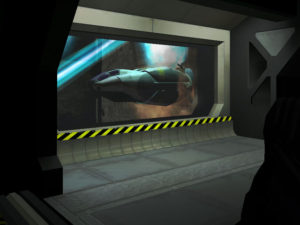![]() I regularly revisit the 1999 Computer Gaming World article “The Next Big Thing: 5 Games That Will Change Gaming,” which heralded the promise of beautiful, open environments in Bungie’s Halo. When my brother got an Xbox two years later, I watched him play through the first level of what appeared to be your typical shooter, mowing down waves of aliens in narrow corridors. When he shortly thereafter crash landed on an ancient ringworld characterized by rolling hills and monolithic alien architecture, and commandeered the series’ now iconic light reconnaissance vehicle to engage enemies on a wide open battlefield, I saw the promise of those early previews fulfilled.
I regularly revisit the 1999 Computer Gaming World article “The Next Big Thing: 5 Games That Will Change Gaming,” which heralded the promise of beautiful, open environments in Bungie’s Halo. When my brother got an Xbox two years later, I watched him play through the first level of what appeared to be your typical shooter, mowing down waves of aliens in narrow corridors. When he shortly thereafter crash landed on an ancient ringworld characterized by rolling hills and monolithic alien architecture, and commandeered the series’ now iconic light reconnaissance vehicle to engage enemies on a wide open battlefield, I saw the promise of those early previews fulfilled.

The sprawling environments for which the series is known carried over from the earliest phases of its development and its origin as a real-time strategy game, which began to morph into an action game in a continuous open world. But as much as the development of Halo was “a series of happy accidents” that led down a twisting path to its fateful release, it was also a product of a conscious, concerted effort to do something different than those that had come before. “Another thing that we were trying to react to at that time,” explains environment artist Dave Dunn, “was a lot of the first-person shooters were still corridor, corridor… and your suspension of disbelief is sort of challenged that those are real spaces.”
In the first level after you crash land on Halo, almost all of the encounters take place in large, nonlinear spaces, some of which have more than one entrance. In the “Reunion Tour” chapter, you are tasked with rescuing your fellow soldiers and crew members. Following a tunnel that cuts through the cliff faces, you eventually arrive at a beautiful, wide open vista than beckons to your instinct for exploration. As you climb a hill in the Warthog, the terrain unfolds in every direction, leaving it up to the player as to where to take the fight. Signal flares and other signposts help you spot areas of interest, but the space is not intended to confine you to a particular path. And the first of these things you might notice, a crashed escape pod, has an equal chance of pointing you in one of several directions. That the three destinations might be reached in any order makes for a much more natural, immersive experience. >> CONTINUE >>